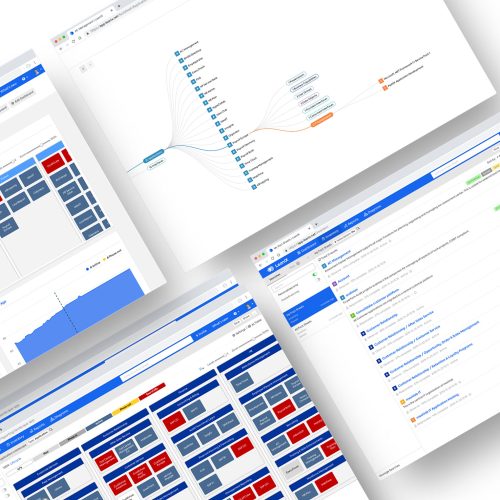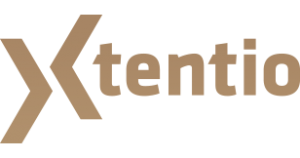Enterprise Architecture Management (EAM) hat das Ziel, die exponentiell zunehmende Komplexität von IT-Architekturen in den Griff zu bekommen. Wir zeigen Ihnen die drei wichtigsten Faktoren, die Sie kennen müssen, um EAM in Ihrem Unternehmen erfolgreich einzuführen.
Ein professionelles Enterprise Architecture Management verschafft Ihrem Unternehmen eine aktuelle und ganzheitliche Sicht auf alle Fähigkeiten, Akteure, Systeme, Infrastrukturen und Lieferanten Ihrer IT-Architektur. Diese Übersicht identifiziert Kostenfallen, verringert Geschäftsrisiken und dient letztendlich auch der besseren Planung und Umsetzung einer zielgenauen IT-Strategie, die als Grundlage für hervorragende digitale Geschäftsprozesse dient. Daher sehen neun von zehn CIOs EAM als den entscheidenden Erfolgsfaktor der digitalen Transformation an1.
But effective enterprise architecture management is about much more than powerful IT management software. Because, as the name suggests, EA management is first and foremost ... a management task. And it requires the ongoing involvement of key stakeholders and business units.Without powerful tools, such as those offered by LeanIX, you can't get the job done - but without a well-coordinated team and functioning processes, you won't get very far either.
If you have decided to introduce EAM as a tool and a new management discipline in your company, you should first define the most important framework conditions. In this series of articles,we will show you which factors are most important. In the first part, we set out to find allies!

What is Enterprise Architecture Management?
The Enterprise Architecture Enterprise Architecture is the holistic description of all essential aspects of an organization's information architecture. Enterprise Architecture Management, or EAM, is a systematic and holistic approach to understanding, designing, planning and communicating these business and technical structures within the enterprise2EAM provides the foundation for the strategic management and evolution of the IT landscape. It identifies optimization opportunities, saves costs, and secures future strategies, decisions, and investments to make IT fit for the business demands of digital transformation. EAM tools like LeanIX help by providing a transparent, real-time view of all technologies, suppliers, capabilities and risks.
Factor 1: Don't start in the IT closet
The enterprise architecture is the backbone of your organization. That's why you should involve key stakeholders from the start.
The most important stakeholders are the executives and employees who are directly or indirectly involved in building, developing, operating, purchasing or deploying elements of the IT infrastructure. And because enterprise architecture is always about digital business models, you should also involve stakeholders and business leaders.
So identify your key partners, consider their interests and requirements, and build an effective Enterprise Architecture Management Board with them. But don't overdo it: start small, but small enough that you can still make useful decisions with this group.
If available, be sure to include
- CIO (chief information officer, IT management)
- CTO (Chief Technology Officer)
- Solution Architect
- CFO (or at least the purchasing department responsible for IT)
- Key business process owner(s)
- IT program management, and
- Development managers.
Because these stakeholders or their departments have the most to gain from professional enterprise architecture management. Whether it is to keep costs down (CFO), to optimize business processes and capabilities (Business Process Manager), or to get a clear roadmap and strategy for upcoming investments and technology decisions (CIO). You can organize the exchange in the form of a regular EAM board, for example. And if you are not aware of the role of the solution architect in your organization, now is the time to start.

How to Find Allies for Successful EAM
- First, identify key stakeholders and their information needs.
- Define these insights as clear requirements for your enterprise architecture management.
- Make it clear to stakeholders how EAM will benefit them.
- Create quick, visible winsby implementing these issues first and making the results available to stakeholders.
Der Dank wird eine hohe Akzeptanz des Enterprise Architecture Managements durch diese Stakeholder sein. Sie erreichen Engagement und Mitarbeit der wichtigsten Interessengruppen und Abteilungen und letztendlich auch die nötige Aufmerksamkeit und Unterstützung durch das Management.
In part two of our “Enterprise Architecture Management”you will learn how choosing the right operating model is critical to the success of your EAM implementation.

Your IT portfolio, finally transparent!
Learn how Xtentio and LeanIX can give you a unified view across all systems and infrastructure projects in four weeks.
Xtentio is a certified partner of LeanIX , the leading tool for collaborative EA management. We support you with the LeanIX Enterprise Architecture Suite in the introduction of Enterprise Architecture Management in your company.
1Enterprise Architecture Insights Report 2019
2Inge Hanschke: Strategic Management of the IT Landscape: A Practical Guide to Enterprise Architecture Management. Hanser, 2013.
Photo credits: (1) (2) (3) iStock
